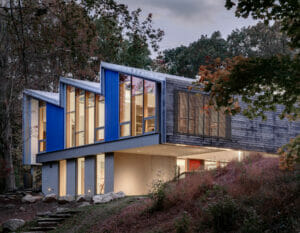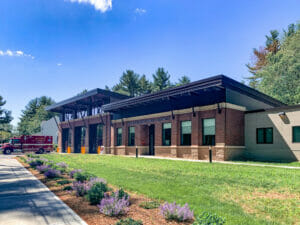Structural engineers are people who focus on a specialized field of civil engineering. It involves the planning, analysis, design, construction, inspection, monitoring, maintenance, rehabilitation and demolition of permanent and temporary structures. Structural engineers handle the research of the behavior of structural systems and their components and reviewing the work of other engineers. It takes into account other factors such as the technical, economic, environmental, aesthetic and social aspects of structures. The various structures can include educational, municipal, multi-family, commercial, mixed use, institutional, religious, historic, coastal and residential. They can be composed of any structural material such as stone, wood, steel, concrete, plastics, aluminum, including composites and novel materials.
Structural engineers are in a very creative profession and can be considered as an art as well as science. It makes a significant contribution to infrastructure and industry, as well as residential and recreational areas.
The design of a structure simply means that the structure be built in such a way that it will be able to withstand all the load effects on it during its lifetime. The structure should not collapse due to any abnormal loading such as that occurring during an earthquake or landslide. Structural design is a balance of theoretical analysis and practicality, something that structural engineers typically excel at. It takes into account things like the degree of certainty of load bearing and forces, the actual behavior of the structure as opposed to the idealized design model, the actual behavior of the material compared to assumed behavior, and the actual properties of materials used compared to the assumed materials.
Some structural engineers work to design the structures. Carrying out the strength calculations, while detailing and making structural drawings. Others specialize in the actual building and development of the structures, and some work in research. Structural engineers commonly work with other professionals such as architects, builders, mechanical, electrical and chemical engineers. This is to ensure that every aspect of the structure is safe, stable, economical, aesthetic, environment friendly, sustainable and capable of fulfilling their intended functions.
What’s The Difference Between Structural Engineers and Other Engineers?
People sometimes can get confused as to what separates structural engineers from architects or civil engineers. This is a common occurrence since most people think that all 3 “just design buildings.”
To better explain the difference, think of buildings like a human body. There are a lot of similarities between the two. The musculoskeletal system can be compared to the structural system in a building. The circulatory system in the body is like the HVAC system in a building. There’s a plumbing system (mechanical, electrical, plumbing, or MEP), and skin (curtain walls, waterproofing membrane, EIFS) to keep the bad stuff out and the good stuff in. A person has to stand on a stable surface (foundation) to keep from falling over.
With that in mind, the architect’s job is to figure out exactly how the “person” will look. They decide where the arms go, where the legs go, what the face looks like, eye color, hair color, where the elbows bend, how far the knees are supposed to bend, other things of that nature. In terms of a building, they determine the building’s layout, appearance, functionality, and aesthetics. It’s a very complicated and difficult job.
The structural engineers get the plans from the architect, and they figure out the mechanics of the musculo-skeletal system. They determine where to put the bones, where to attach the muscles so that the body is able to function the way it should. How does this relate to a building? They determine the proper placement and sizing of beams, columns, slabs, foundation specifics, and all the systems used to resist the different loads. Examples of loads a building will encounter include wind, snow, earthquakes, and landslides. The building needs to be able to withstand the load and transmit it to the ground.
The job of the civil engineer has less to do with the human body, so we will no longer use that analogy. Any drainage and waste systems in the building need to be connected to municipal sewer systems. The building also needs to be connected to the municipal water supply. Cars need to be able to reach the parking lot, and the parking lots have to meets the needs of the building. The parking lot also needs to drain properly so it is usable when it rains. All this is the domain of the civil engineer.
Need An Engineer?
Based on what you’ve read above, think it’s time to call in a professional? If you find yourself in need of structural engineers that will do the job right, drop us a line at [email protected]



